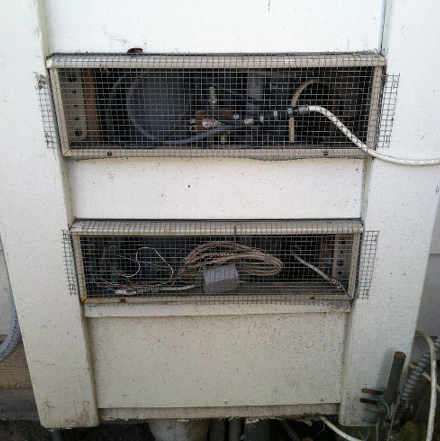
RODENT PROOFING
Guide & Instruction

Why do Rodents Enter Structures
Rodents tend to enter structures for sanctuary when their burrows begin to flood. We see this most frequently in February due to the extra amount of rain. Also, rodents enter structures for breeding. Once this begins, soon you will have a whole family of rats (sometimes mice) with a nice dry place to stay warm with plenty of nice fluffy insulation to burrow into. So the question is, what do you do about it?
Rat and Mouse Entry Hole Sizes
You need to check for structural deficiencies. Exterminators call this process rodent proofing. Isn’t the very reason you have a house in the first place is to keep the outside out? Lets first think about what size holes we are looking for. Rodents have this fancy ability of plasticity. The general rule is, if they can get there head through it, the rest of their body is coming too. So that means you need to look for holes the size of a quarter for rats (about 1 inch) and / or the size of a dime (about 2/3 in) for a mouse.
How to Inspect for Rodent Entry Points
Now walk around the perimeter your house looking for these holes on the exterior walls of your house. Take special note to where services enter you home i.e. Water pipes, A/C line, cables and also pay attention to vents on the bottom of your house if you have a raised foundation. If you find a hole concern take note if it has dark smudging around it. Rats are very dirty and greasy and they get the surfaces around the hole dirty from entering in and out of it. Do the Smuged holesame for the rooftop. Don’t worry about plumbing vents unless they’re cut in the attic and are not functional. You need to look for holes under the eaves where two roof lines meet and rarely, if you have enclosed eaves you can have the plywood roof under the roof material raising up allowing a gap for entry. Again take note for services running to the home especially cable and electricity in older homes. Also take note of any trees or objects within three feet of the rooftop.
How to Repair Rodent Entry Points
Now that you know where the deficiencies are its time to fix them. Where possible use stucco to repair stucco on a home. It is actually very easy. Mix stucco with water and apply. Next for lager holes use hardware cloth and appropriate fasteners i.e. staples for wood or screws with anchors for stucco. Last for a quick lasting fix shove steel wool in the hole. Remember to use stainless steel or similar to prevent oxidation stains on the house. Do not use expanding foam or rubber weather stripping for permanent rodent proofing.
That’s pretty much it. If you’re not familiar with this or you’re uncomfortable with getting on top of the roof you should call professional.
Having trouble with Pests?
Give us a call: 661-645-6855
Or have Traffic contact you today and get a FREE estimate for:
Your Neighborhood Bug Guys!
Traffic Pest Solutions (LA)
15828 Toscana Ct.
Santa Clarita, CA 91387
Phone: (661) 645-6855Santa Clarita, CA 91387

